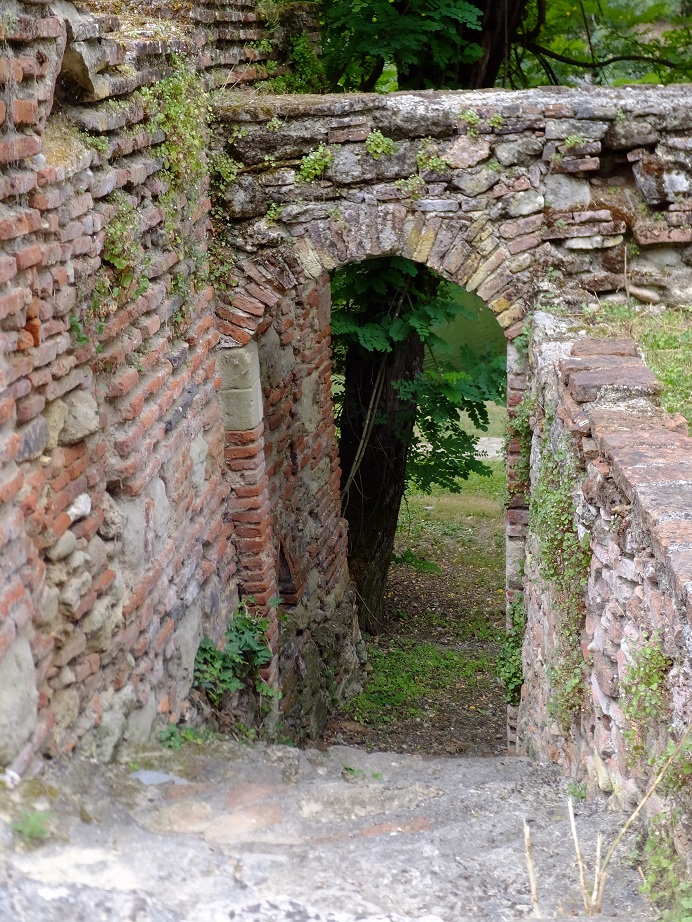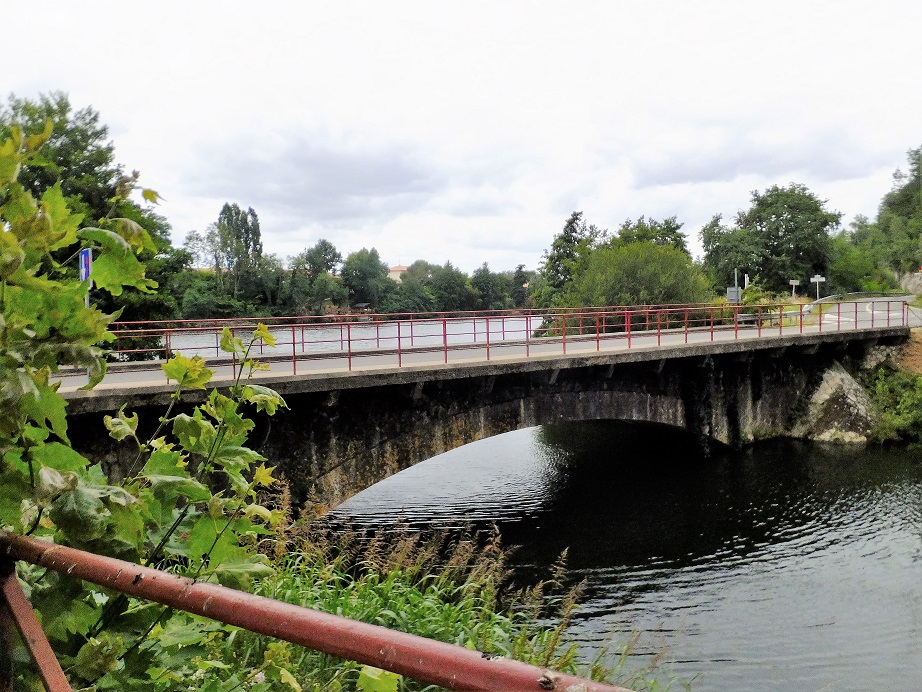 |
A stop at a miradouro provides this view of the Baia da Ribeira
das Cabras on the northern shore of Faial. |
After five days on the island of São Miguel, we travel by plane to the second stage of our visit to the Azores. During our week here, we stay on two of the islands that make up the
triangulo: Faial and São Jorge. We also spend the day on the second largest island in the Azores, Pico.
Faial
 |
| Caldeira do Faial is a volcanic crater located in the middle of the island. |
Our first stop is Faial, where we hunker down in Horta, the island's largest city. Faial is known as the "blue island," in tribute to the abundance of hydrangeas that grow here. Once an important whale-hunting port, Horta remains a stopover point for yachts en route across the Atlantic.
 |
Peter's Cafe and Scrimshaw Museum is popular with tourists.
Peter's various enterprises take up most of this block in Horta. |
 |
| Our guide shares with us his favorite view of the Faial coast. |
 |
| A church on the Faial coast comes with a magnificent ocean view. |
A huge volcano erupted here in 1957 and the result was a change in the local geography. Our guided tour of the island includes a stop at the Volcão des Capelinhos on Faial's western coast. We also have a chance to peer inside the Caldiera at the center of the island.
 |
| Ponta das Capelinhos on Faial is the site of a large volcanic eruption. |
 |
| Lava from a large volcanic blast in 1957 added some real estate to Faial. |
The city of Horta hugs the waterfront, and steep streets continue up the hillside. Our calf muscles get a workout here. The pleasant weather on the island contrasts with choppy seas, which thwart my plan to go whale-watching while we're here. My disappointment is short, however, as we discover some simple delights during our walks around the city.
 |
I didn't know bananas grew upside down until I came
upon this bananeira in our Horta neighborhood. |
 |
As one of our travel companions is a retired firefighter, a visit to Horta's
Corpo de Bombeiros is required. |
 |
Horta's harbor-side road is Avenida 25 de Abril — commemorating the
overthrow of Portugal's authoritarian regime in 1974. |
 |
This statue is inside the Igreja de Nossa Senhora das
Angústias, one of Horta's many churches. |
Pico
 |
| Pico is the highest mountain in Portugal (7,713 feet). |
You won't find white sandy beaches on Pico, the second largest island in the Azores, but its offbeat black lava beauty is breathtaking. Dominating the island is Pico mountain, the centerpiece that brings hikers, bikers and other trekkers here. Our primary reason for visiting is because this is the island where many of my husband's ancestors came from.
 |
| On a warmer afternoon, this would be a sunny spot to relax on Pico. |
After we disembark the ferry in Madalena, we stop for coffee and sweets and hire a cab to take us to the village of Santo Amaro, where Ken's great great grandfather is buried. Although we're unable to find his grave, just being here is moving for my husband and his mom.
 |
Grapes are grown on the hills above the village of Santo Amaro on Pico,
an island known for its wine. |
Our taxi driver takes us along the northern coast of the island, past vineyards where Pico's renown wine grapes are grown. He points out the changing landscape, some parts are green and fertile, others are black and rocky. Pico's lava beds were turned into orchards and vineyards in the centuries since the island's most recent volcanic eruptions in the 1700s.
 |
| Paved paths allow us to get an up-close look at Núcleo Cachorro on Pico. |
São Jorge
 |
This bright red gazebo in the Velas's main square, Jardim da República,
is a refreshing splash of color against the gray sky. |
São Jorge's history is a bit of a mystery, although there already were settlers here when its main city, Velas, was established in the 15th century by Wilhelm van der Haegen, a Flemish nobleman. Although Velas contains some charming touches, it is not my favorite stop in the Azores. The best part of our stay here is a scary dip in the ocean at a lagoon very close to our apartment.
 |
| We're a bit wary of the waves in this swimming lagoon in Velas. |
 |
| This swimming lagoon on São Jorge is calmer than the one near where we stayed. |
Like nearly all the churches we see in the Azores, Igreja Matriz in Velas is constructed of lava rock and thus is the requisite black and white. The city's auditorium/library, however, is a modern, bright orange structure at the edge of the water.
 |
| It seems that nearly all the churches in the Azores are black and white. |
 |
| The modern Auditorio/Biblioteca in Velas stands out for its shape and color. |
 |
| A rare touch of humor emerges from this fountain in Velas. |
 |
| I am enamored of the burst of red in the center of Velas's main plaza. |
Our taxi tour of the island takes us along steep coasts that dip down to small flat areas called
fajãs at the water's edge. At one stop, we can see a crowd gathering on the edge of a village for a bullfight. At least a quarter of our party is uninterested in waiting around for the main event; I prefer my cows to be peacefully grazing on a mountainside. The main industry here is dairy, and these cows certainly earn their sweeping ocean views.
 |
| The dairy cows here are responsible for the famed São Jorge cheese. |
 |
| The views are never dull in the Azores. |
Next up on Away to Live is Terceira. In case you missed part 1 of the Azores posts, click
here.





























































